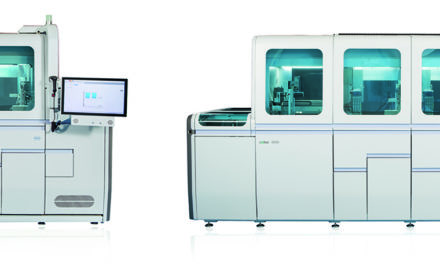Twice as many eligible patients got screened for hepatitis C when it was already ordered for them compared to those who had to request it, according to a new study by researchers at the Perelman School of Medicine at the University of Pennsylvania. Additionally, the patients in the study—whose average age was 63—completed their screenings much more often when they were contacted via mail as opposed to electronic messaging. The study was published in BMJ.
“We think that sending the lab order with outreach was so successful because it framed screening as the default,” says the study’s lead author, Shivan Mehta, MD, the associate chief innovation officer at Penn Medicine. “However, this strategy was also successful because it reduced effort and the number of steps to screen by both the patient and clinician.”
More than 21,000 patients born between 1945 and 1965—due to the high instances of hepatitis C but low screening rates in this population—were enrolled in the study. In Pennsylvania, where the study took place, state law requires health systems to offer screening to patients in this demographic. So the researchers decided this was a good venue to see if they could improve upon and rigorously evaluate something they were doing anyway.
Patients were chosen from participating primary care practices in the Philadelphia region and randomized into a number of groups to compare which resulted in higher screening rates: one examining whether pre-ordered screening tests were better than traditional outreach, another looking into mailed versus electronic communication, and the last trying out behavioral science-informed messaging. The study’s active phase stretched 12 months from April 2019 until May 2020.
Mehta and his colleagues add more evidence to behavioral science’s tenet that it’s best to make the most beneficial choice the easiest. In the arm of the study where patients received a screening order in addition to the usual reminder letter, 43% of the patients completed their hepatitis C screening within four months; just 19% got screened if they only received the reminder letter with no lab order. This was what the researchers believed they’d find.
But the study had some unexpected findings. When the researchers compared the group of patients who received a mailed letter notification against a group who were notified via an online patient portal—like those many health systems use—the electronic method underperformed slightly, though not significantly. Roughly 18% of the patients mailed letters completed screening versus 14% of those who were contacted via a patient portal. There was a specifically pronounced divide when it came to Black patients in this phase of the study, as 11% fewer completed screenings if they were reminded via the patient portal.
“This was the biggest surprise for us. Many presume that most people are moving digital towards email, but for some populations, traditional letters might be best,” Mehta says. “Additionally, the user experience of the secure messages also may have had to do with the lower response rate. Patients need to click on a link and remember their password, which may pose challenges.”
Another slight surprise was the messages with content informed by behavioral science (such as “Join the majority of other patients who have been screened for Hepatitis C” or “Write down a date when you will get your screening done”) did not make a difference in screening rates. A single percentage point separated the two groups of patients: roughly 15% of patients who were reached with traditional messaging were screened compared to about 14% of those from the behavioral science group.
“One of our hypotheses is that the behavioral-informed messages had a longer message, which may have been too much for patients,” Mehta explains. “There is some evidence that shorter messages may be more effective. That may be the case in this situation.”
Mehta said this study can inform clinical efforts beyond hepatitis C screening, assisting screenings and preventive care for other conditions.
Within hepatitis C, though, the researchers believe that the attachment of the order for screening was the greatest overall driver, so they hope to use that technique digitally, as well, to potentially boost those numbers. And screening recommendations are expanding to include all adults older than 18, which means there is a whole new population to reach.





